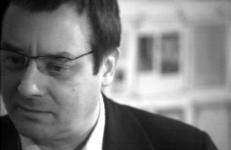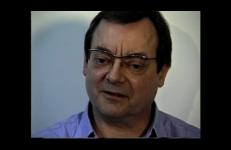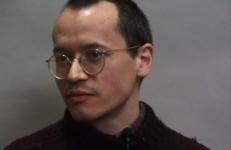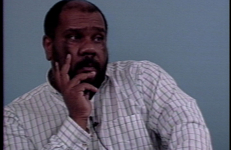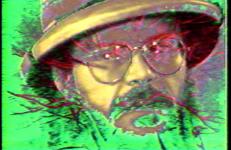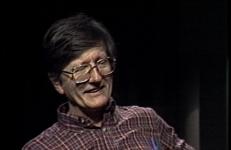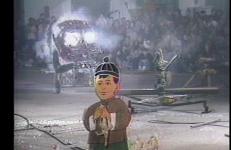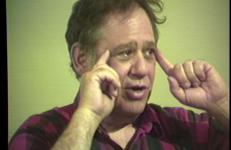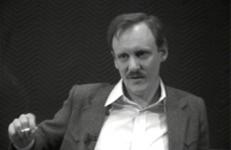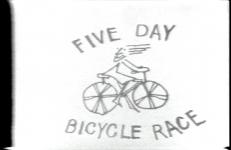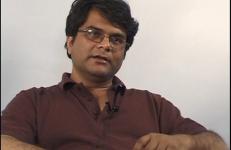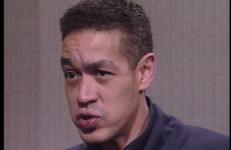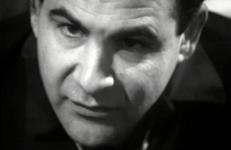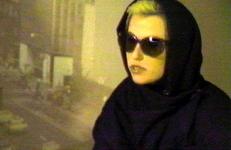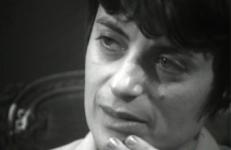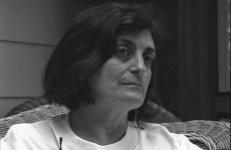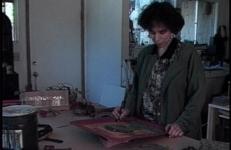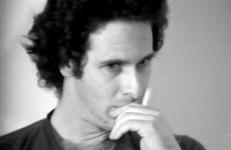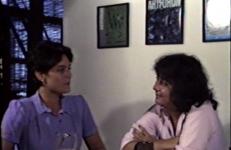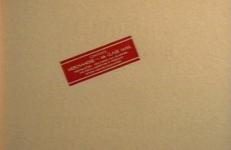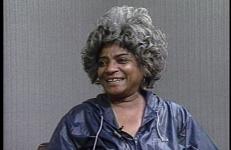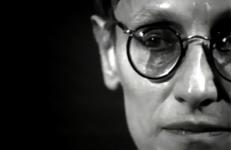American painter, Robert Ryman (b. 1930) is associated wth the movements of monochrome painting, minimalism and conceptual art. The artist first moved to New York City from Nashville with the intention of becoming a jazz musician. In 1953 he took a temporary job—where he would ultimately work for seven years—as a guard at the Museum of Modern Art. Soon after, he would decide to devote his career towards painting. In his first paintings and collages from the mid-1950s, he experimented with material, color and brushwork, eventually reducing the painting to its barest elements.
Interview
In this interview painter Robert Ryman (b. 1930) describes his artistic influences, recounts his work process, and assesses the use and meaning of painting, both in the 1960s and the 1990s. For Ryman, the focus of his work is not politics or society, but the “problem of painting.” This interview sheds light not only on his method, which he calls an “intuitive approach,” but also on the artist’s ongoing investment in the physicality of scale, surface and materiality.
Joe Sacco is a cartoonist who has contributed to a wide range of comic magazines including Drawn and Quarterly, Prime Cuts, Real Stuff, Buzzard, and R. Crumb’s Weirdo; he continues to illustrate the semi-regular Painfully Portland cartoon strip for the Willamette Week. He was a recipient of the prestigious American Book Award in 1996 for his work Palestine (1996), which combines techniques of eyewitness reportage with comic strip storytelling.
Juan Sanchez explores his Puerto Rican heritage and the issue of Puerto Rican independence through his work as an artist and writer. Combining painting, photography, collage, and printmaking techniques, Sanchez’s art joins images of contemporary barrio life with memories of Puerto Rico, and addresses a fragmented Latino community fraught with political resistance and cultural alienation.
Interview by Bibiana Suarez.
A historical interview originally recorded in 1990.
Dan Sandin designed the Image Processor that, partly because of his decision to give away the building plans, has effected an energetic and aesthetic investigation of the technological structures of electronic media. He sees the Image Processor as both an event and an environment for artists to explore and experience. During the interview, Sandin spontaneously synthesizes his own image.
Interview by John Manning. Shot by Christine DeLignieres.
A historical interview originally recorded in 1980.
This interview depicts American writer, activist, and AIDS historian Sarah Schulman (b. 1958), discussing becoming a writer, her novels, and her long-term collaboration with filmmaker James Hubbard on projects devoted to gay liberation and AIDS activism. Born in New York to a Holocaust-surviving family, Schulman grew up in an era where women were not considered important.
Painter Peter Saul’s iconoclastic paintings parody various aspects of contemporary American life, from politics to sex to violence. He has been an inspiration to several generations of American painters and is retired from the Department of Fine Arts at University of Texas-Austin. Interview by Jim Johnson.
Flesh meets robotics in this early video documentation of Survival Research Laboratory’s spectacular exhibitions of collective invention, anti-corporate technology, and satirical mass destruction. In the performances documented here, various animal corpses are integrated into the action as the clawed and spiked machines attack dummies, each other, and, occasionally, the audience. The video begins with the song Stairwell to Hell, an appropriate prologue.
Canadian-born artist Miriam Schapiro (b.1923) was one of the great forces behind the feminist art movement in Los Angeles. Originally painting in an Abstract Expressionist manner, she developed a new, more personal style of assemblage she called “femmage” as she became more politically involved. She was also one of the first scholars to create a curriculum on Feminist Art at CalArts. Through the use of large scale media and symbols emblematic of the female, she has battled to pay homage to women and their undervalued domestic traditions.
Richard Schechner is Professor of Performance Studies at New York University, author of numerous books including Performance Theory (1988) and The Future of Ritual (1993), and editor of The Drama Review. This interview with Nancy Forest Brown was conducted during an event at the School of the Art Institute of Chicago.
Peter Schjeldahl (b.1942) began writing his “poetical criticism” for Tom Hess at ArtNews in the mid 1960s. He has since written for both popular and specialized publications including The New York Times, Art in America, and The Village Voice, among others. In this interview from 1982, Schjeldahl discusses the critic’s relationship to the artist, the audience, artwork, and the professional community of art critics. He also reads some of his own poetry.Currently, Schjeldahl writes for The New Yorker and various art journals.
A collage of informal interviews and short clips, this collection of material comes from guerilla TV excursions at the 1976 Democratic National Convention. Conducted off hand, usually amidst crowds of other journalists, the footage oscillates between slight antagonisms, genuine interest, and tongue-in-cheek play. The sheer breadth of participants being engaged with, however, is quite impressive as the soon-to-be First Lady, Jesse Jackson, David Dellinger, Bella Abzug and Jerry Brown all make appearances.
In this interview, Indian artist Shuddhabrata Sengupta (b. 1968) discusses his role in the initiation of the Raqs Media Collective, a Delhi-based artist collective, active since the 1990s. At the time of this interview, Raqs had been creating documentaries, art installations, and educational programs for eighteen years. Sengupta likens the driving force of Raqs to that of a game of catch, a process generated by a back-and-forth dialogue mobilized through writing and in-person meetings. As children of the late sixties, Sengupta explains how and why the members of Raqs, (himself, Jeebesh Bagchi and Monica Narula) share an interest in investigating mass communication, technologies of visibility, and the significance of memory and travel. It is also for this reason, Sengjupta explains, that the Collective’s work is committed to fostering rigorous research in addition to art-making endeavors.
Andres Serrano was born and raised in New York. At fifteen he dropped out of high school. A few years later he attended the Brooklyn Museum School and studied painting and sculpture. After two years, Serrano decided that neither of these art forms were appropriate for his particular vision, and began to make photographs. Serrano’s work came to the attention of the general public as part of the controversy surrounding the issue of censorship and the NEA.
Joel Shapiro (b.1941) came to prominence in the early 1970s with his representational miniatures of everyday objects like chairs and houses. Since then he has become one of the most exhibited American sculptors. Shapiro’s vocabulary consists largely of rectangular volumes, with which he has created a body of work dancing on the line between abstraction and figuration. The human form has been a major theme in Shapiro’s geometric expression.
Cindy Sherman received an MFA from the State University of New York at Buffalo in 1976, where she studied photography. During this time she was also involved with HallWalls, an alternative gallery space in Buffalo. She is best known for her black and white Untitled Film Stills, which she made in the late 70s and early 80s. In carefully designed settings, Sherman placed herself, using costumes, wigs, and makeup, in various scenarios suggetive of B-movies from the 1950s.
Hollis Sigler (1948–2001) was a Chicago-based artist. She received degrees from both Moore College of Art and the School of the Art Institute of Chicago. Her mature artistic style was faux-naïve, featuring paintings whose subjects, furniture and clothing set in doll-house type interiors and suburban landscapes, were stand-ins for the implicitly female figure. She was an openly lesbian artist and a prominent member of the faculty of Columbia College in Chicago.
In 1985, Hollis Sigler, a leading feminist artist in Chicago, was diagnosed with breast cancer, a disease that had also stricken her mother and great-grandmother. This interview with Hollis Sigler focuses on the period of her life beginning with the work entitled Breast Cancer Journals, a series of paintings, drawings, and collages expressing a wide range of emotional responses to the various stages of her struggle with cancer encompassing more than 100 works. Art in America called Sigler’s Breast Cancer Journals “one of contemporary art's richest and most poignant treatments of sickness and health.Taking on a kind of religious conviction, her jewel-colored symbols imbue a death-haunted situation with miraculous, celebratory life.”
This tape profiles mother and daughter artists Betye and Alison Saar. Both artists work with sculpture and installation, frequently using found objects, wood, and sheet metal to evoke sacred African-American rituals and images. Similar Differences was produced in concert with their first collaborative exhibition in a decade, Secrets, Dialogues, Revelations, which opened at UCLA’s Wight Gallery in January 1990 and toured nationally in 1992.
Charles Simonds (b.1945) majored in art at the University of California at Berkeley. There he discovered an area of clay pits that had once provided the raw material for some of Manhattan's older buildings. He literally immersed himself in the subject, burying himself in a pool of wet clay to get a feel for the material. Simonds's sculptures are enchanting architectural minatures. Most are landforms with small chambers and towers; some are abstract organic shapes. Carefully built brick by tiny brick, Simonds's sculptures engage the child in everyone.
Sirrocco was a drag performer and club icon in Cincinnati, Ohio during the 1980s and 1990s, and was also a close neighbor and friend of Teramana’s. In a series of short interviews, Sirrocco talks about visiting her hometown in Kentucky, hormone therapy, and dating as a transgender woman.
Ingrid Sischy was editor of Artforum in the 1980s and has been editor-in-chief of Interview magazine since the 1990s. In this interview with Robin White, Sischy discusses Artforum’s priorities, purpose, and goals.
“It’s an intricate history where painting, sculpture, performance, video, and photography are extremely connected to each other. As the editor of Artforum, I would feel at great fault to not include the best and the most interesting questions of each because they affect each other, and artists’ choices are not made in a vacuum.”
For the past 20 years Alexis Smith's mixed media work has explored primal American myths: the open road, the bad/good guy/gal, the quest for romance, and the search for paradise. This portrait of the artist explores the roots of her thought and work, and was produced in conjunction with her exhibition at the Whitney Museum of American Art, held in November 1991.
Washington, D.C.-based African-American artist Sylvia Snowden paints what she calls “figural or structural abstract expressionist” works. Three years after this tape was produced, her son was shot to death, and she spent the next three years producing 87 works in a variety of media.
Best known for her drawings and prints, Nancy Spero (1926-2009) worked as an oil painter on both paper and canvas and with installations. As both artist and activist, Nancy Spero's career spanned fifty years. Spero was active in many radical groups including WAR (Women Artists and Revolution) and AIR (Artists in Residence), the first women’s cooperative gallery in New York. She was renowned for her continuous engagement with contemporary political, social, and cultur




